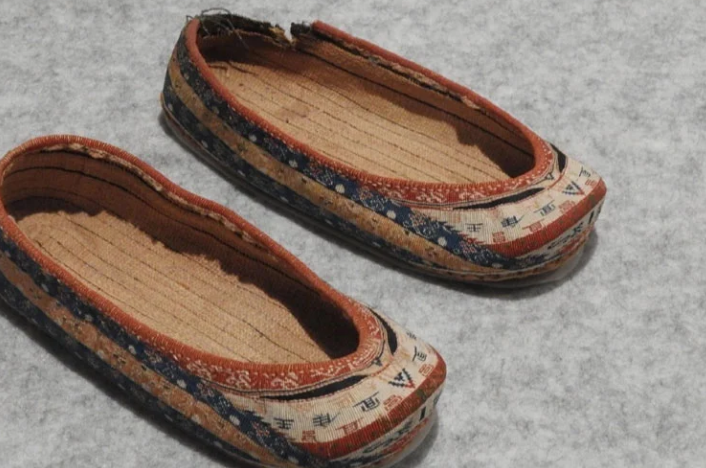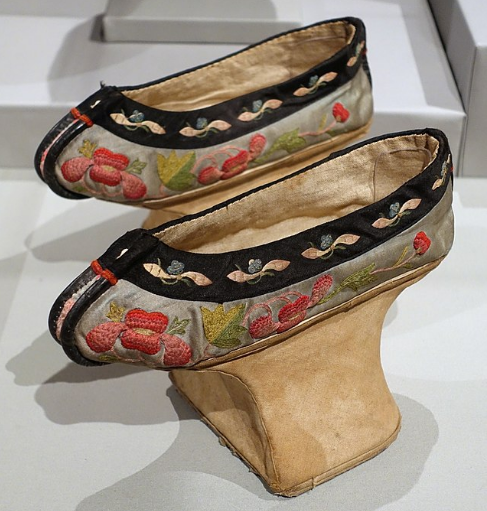There are many varieties, such as Lü, Xieqiao, Cailu, Lianlü, Hutou xie, and more.
Classification of Hanfu Shoes
Counting the Varieties
Exploring the rich tapestry of Hanfu shoes reveals a fascinating array of styles and designs. In this exploration, we delve into the diverse world of Hanfu footwear, a key component of traditional Chinese attire, dating back thousands of years. Each pair of shoes is not just a fashion statement but a story in itself, reflecting the customs and artistry of ancient China. Hanfu shoes, renowned for their elegance and cultural significance, come in various forms, each with its unique characteristics and historical background.
Criteria for Classifying Hanfu Shoes
When classifying Hanfu shoes, we consider several critical factors. Firstly, the material plays a pivotal role, ranging from luxurious silk to humble cloth. The choice of material not only determines the shoe’s appearance but also its comfort and durability. Secondly, the design and pattern are essential indicators of the shoe’s origins and use. Intricate embroidery, for instance, often signifies a shoe meant for nobility or special occasions. Additionally, the construction technique—whether sewn by hand or machine—adds another layer to the shoe’s identity, reflecting the craftsmanship involved.

In the realm of Hanfu footwear, each style holds its unique place, influenced by historical periods and regional variations. For instance, the Tang dynasty favored flamboyant designs with upturned toes, while the Ming dynasty saw a preference for simplicity and elegance. These differences not only represent the aesthetic preferences of the time but also indicate broader societal changes and influences.
The practicality and function of Hanfu shoes are crucial in their classification. Some designs are tailored for daily wear, offering comfort and ease of movement, while others are crafted for ceremonial purposes, prioritizing aesthetics and intricate detailing. This functional aspect often dictates the shoe’s structure, with more robust designs for everyday use and delicate constructions for special occasions.
By examining these various elements, we gain a deeper understanding of the Hanfu shoe’s place in Chinese culture and history. Each pair tells a story of the people who wore them, the artisans who crafted them, and the times they lived in. This rich legacy continues to influence modern fashion and cultural practices, making Hanfu shoes a timeless symbol of Chinese heritage.
Detailed List of Hanfu Shoe Types
Traditional Cloth Shoes
Traditional cloth shoes, a cornerstone in Hanfu attire, trace their origins back to ancient China’s dynasties. Craftsmen used breathable materials like cotton or linen to make these shoes, focusing on comfort and practicality for everyday use. A flat sole characterizes the design, made from soft, pliable materials, allowing for flexibility and ease in movement. These shoes evolved subtly in style from the Han to the Qing dynasty, with variations in color and minor embellishments reflecting regional tastes and available materials. Despite their simple origins, traditional cloth shoes represent the ingenuity and resourcefulness of ancient Chinese shoemakers.
Embroidered Boots
Originating in the royal courts and affluent households of ancient China, embroidered boots showcase opulence and exquisite craftsmanship. Shoemakers used luxurious fabrics like silk and brocade and adorned them with intricate embroidery featuring auspicious symbols and motifs. These designs often included dragons, phoenixes, or peonies, symbolizing good fortune and high status. Only the elite could wear these custom-made boots, reflecting their social standing. The design of these boots evolved through various dynasties, each adding unique touches that reflected the changing tastes and cultural influences of the time.
Silk Slippers
Silk slippers in Hanfu culture, worn originally by nobles and royal family members, symbolize luxury and artistic expression. Craftsmen created these lightweight slippers from the finest silk, often adding delicate embroidery or beadwork. The colors and patterns held significant meanings, with each hue and design element symbolizing specific virtues or wishes. For example, red slippers, often associated with happiness and good luck, were a popular choice for weddings and celebrations. Silk slippers have remained a staple of traditional Chinese formal wear for centuries, prized for their beauty and the skill required in their creation.
Other Historical Varieties
Various other types of Hanfu shoes each have their unique place in Chinese history. Leather boots, essential for military personnel and horsemen, provided durability and protection with thicker soles and reinforced materials. Wooden clogs, popular among the working class, especially in rural areas, showcased the practical use of local materials. These clogs, known for their sturdiness, were suitable for various labor-intensive activities. Each variety reflects the diverse needs and lifestyles of ancient Chinese society, highlighting the adaptability and innovation in traditional Chinese shoemaking.
Comparative Analysis of Hanfu Shoe Styles
Differences in Design and Function
Hanfu shoes exhibit a remarkable variety in design and function, each suited to specific purposes and social contexts. Cloth shoes, with their simple, flat soles, prioritize comfort and practicality for everyday use. In contrast, embroidered boots, adorned with intricate patterns, serve more as a symbol of status and are often worn on special occasions. Silk slippers, known for their elegance, are typically reserved for formal events and ceremonies. The design of these shoes not only reflects the aesthetic preferences of different eras but also the functional needs of their wearers. For instance, the sturdy construction of leather boots caters to the demands of outdoor activities, while the soft, flexible nature of cloth shoes suits daily, indoor use.
Regional Variations Across China
The diversity of Hanfu shoes also mirrors the rich tapestry of China’s regional cultures. In the northern regions, where the climate is colder, shoes often feature thicker materials and more coverage, providing necessary warmth. Southern styles, on the other hand, lean towards lighter, more breathable materials suitable for the warmer climate. This regional distinction is not just a matter of practicality but also a reflection of the local artistic styles and available materials. For example, the embroidery styles and motifs can vary significantly between regions, each telling a story of its local history and traditions.
Comparative Table of Regional Variations in Hanfu Shoes
| Region | Typical Shoe Type | Material | Design Features | Climate Adaptation |
|---|---|---|---|---|
| Northern | Boots, Thick Shoes | Leather, Heavier Fabrics | Thicker Soles, More Coverage | Warmth for Colder Climate |
| Southern | Cloth Shoes, Slippers | Cotton, Linen, Silk | Lighter Soles, Breathable Design | Comfort for Warmer Climate |
This table showcases how Hanfu shoes adapt to regional climates and cultural influences, reflecting the diversity and adaptability of traditional Chinese craftsmanship. By examining these variations, we gain insight into not just the functional aspects of these shoes but also the cultural identities they represent. Each style, material, and design element tells a unique story of the people and the land, woven into the fabric of China’s rich and diverse heritage.

Evolution of Hanfu Shoe Styles
Historical Development Through Dynasties
Tracing the evolution of Hanfu shoe styles, we embark on a captivating journey through China’s history. Initially, in the Zhou Dynasty, shoes were simple and functional, reflecting the practical needs of the time. Progressing into the Tang Dynasty, there was a significant shift; footwear became more elaborate, featuring boots with upturned toes, mirroring the era’s flamboyant fashion sensibilities. Then, in the Song Dynasty, the trend gravitated towards more practical and modest designs, resonating with the cultural ethos of simplicity and understatement prevalent at the time. The Ming and Qing Dynasties marked another transformation, with shoes becoming more refined and intricate. This period saw the widespread use of embroidery and luxurious materials, indicating a greater emphasis on aesthetics and social status.
Modern Interpretations and Adaptations
In contemporary times, Hanfu shoes have seen a remarkable revival, ingeniously blending traditional designs with modern fashion trends. Today’s designers and craftsmen infuse new materials and techniques while preserving the essence of the traditional styles. This fusion results in shoes that are not only culturally rich but also resonate with modern tastes and practical needs. Modern interpretations focus on enhanced comfort, durability, and versatility, making these ancient styles both accessible and relevant to today’s audience. This ongoing evolution is a vivid illustration of the dynamic and adaptable nature of cultural heritage, continually finding new expressions and relevance in a constantly evolving world.
The journey through the evolution of Hanfu shoes is a vivid narrative of cultural expression through fashion. Each historical period in China’s rich tapestry has left an indelible mark on these traditional shoes, telling the story of its people and their changing lifestyles. The modern adaptations of these styles highlight how traditional craftsmanship can intersect seamlessly with contemporary design, ensuring that this unique aspect of Chinese heritage continues to evolve, captivate, and resonate with new generations.







